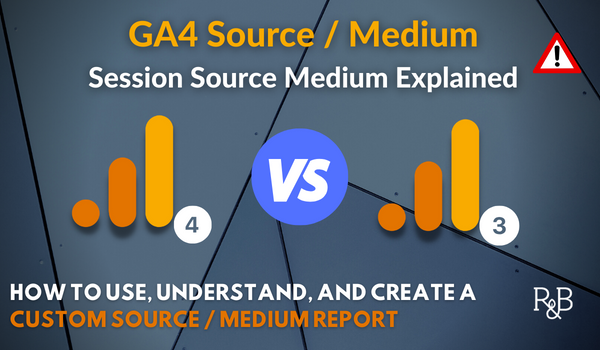In-Depth Consider Secondary Dimensions in Google Analytics: Definition and Ideal Practices
In-Depth Consider Secondary Dimensions in Google Analytics: Definition and Ideal Practices
Blog Article
Revealing the Effect of Additional Dimension in Google Analytics on Data Evaluation and Insights
In the realm of information analytics, the utilization of second measurements within Google Analytics has actually become a crucial tool for drawing out much deeper insights and unraveling complicated patterns that may or else remain covered. By peeling off back the layers of main data collections, additional measurements supply a nuanced point of view that enhances the understanding of customer actions, site performance, and the effectiveness of advertising techniques. The true impact and untapped capacity of second dimensions are typically taken too lightly, outweighed by the appeal of main metrics. As we browse with the elaborate landscape of data evaluation, the relevance of secondary dimensions comes to be increasingly noticeable, shedding light on essential information that hold the secret to notified decision-making and calculated optimizations.
Discovering the Concept of Additional Measurements
Second measurements in Google Analytics give additional understandings by enabling individuals to evaluate primary information in conjunction with a secondary characteristic. By incorporating second dimensions, customers can dive deeper into the data and reveal important relationships that might or else go unnoticed - what is a secondary dimension in google analytics.
Comprehending the idea of additional measurements is crucial for optimizing the potential of Google Analytics. It permits customers to segment data efficiently, recognize patterns, and make notified choices based on an extra total photo of their analytics information. By discovering the different second measurements available in Google Analytics, individuals can unlock new insights and enhance their electronic advertising initiatives. Essentially, second dimensions offer as a powerful device for boosting information evaluation and driving workable outcomes.
Enhancing Information Analysis With Second Dimensions
Having developed the foundational understanding of second dimensions in Google Analytics and their critical function in data analysis, the focus currently moves towards leveraging these additional features to boost the interpretation of analytics information (what is a secondary dimension in google analytics). By incorporating second measurements right into data analysis, experts can obtain much deeper insights into user habits, site performance, and advertising performance

In addition, secondary dimensions aid in contextualizing main data metrics by giving additional layers of info. This contextualization aids in recognizing the 'why' behind the data trends, aiding analysts make informed optimizations and choices to enhance overall performance. Inevitably, incorporating additional dimensions enriches the information interpretation procedure, leading to even more purposeful insights and calculated activities.
Revealing Hidden Insights With Secondary Dimensions
Discovering the midsts of analytics information with secondary dimensions reveals valuable insights that would certainly otherwise remain covered. By incorporating additional go to this web-site dimensions in Google Analytics, organizations can uncover surprise patterns, fads, and connections that provide a more navigate to this website thorough understanding of individual habits and internet site efficiency. These additional layers of data allow experts to delve deeper into the key measurements, such as traffic resources or landing web pages, and acquire an extra nuanced perspective on how various variables connect with each various other.
Through the use of additional measurements, experts can segment and compare information throughout numerous measurements, enabling them to determine certain variables that affect individual interaction, conversion prices, and total success metrics. For instance, by pairing the key measurement of 'device group' with the secondary measurement of 'age group,' marketing experts can pinpoint which age demographics favor accessing the site through mobile phones versus desktops. This degree of granularity empowers services to make data-driven choices and maximize their strategies for much better results. Inevitably, discovering hidden insights with secondary dimensions enhances the deepness and accuracy of data evaluation, causing even more educated decision-making and improved performance outcomes.
Leveraging Second Measurements for Actionable Analytics
Building upon the understandings introduced with second dimensions in Google Analytics, services can currently harness this enriched data landscape to drive actionable analytics and critical decision-making. By leveraging secondary measurements, organizations can delve much deeper into their data to draw out valuable patterns, patterns, and connections that might have formerly gone unnoticed. This much deeper degree of evaluation makes it possible for organizations to get a more detailed understanding of user actions, project efficiency, and general site efficiency.
One secret benefit of using second dimensions for actionable analytics is the capacity to section data based on specific criteria. This segmentation permits companies to customize their campaigns and techniques to various audience teams, leading to much more targeted and efficient marketing initiatives - what is a secondary dimension in google analytics. In addition, additional measurements supply an even more alternative view of customer interactions, making it possible for services to optimize their web site material, style, and general customer experience
Making Best Use Of Decision-Making With Additional Measurements
To improve calculated decision-making in analytics, leveraging second dimensions in Google Analytics can provide a more nuanced viewpoint on user behavior and campaign efficiency. By incorporating secondary measurements into data evaluation, businesses can delve much deeper into the specifics of their web site site visitors' try here interactions and involvement patterns. This added layer of details permits for a more thorough understanding of just how various variables, such as demographics, tools, or web traffic sources, effect key performance indications.

Conclusion
Finally, the use of additional measurements in Google Analytics plays an essential duty in enhancing data evaluation and revealing hidden understandings. By exploring this idea, one can get a deeper understanding of individual habits and make informed decisions based upon workable analytics. Leveraging additional dimensions enables a more thorough analysis of data and makes the most of the performance of decision-making processes.

Report this page